After 40 years in craft, French textile artist Simone Pheulpin is finally making her point
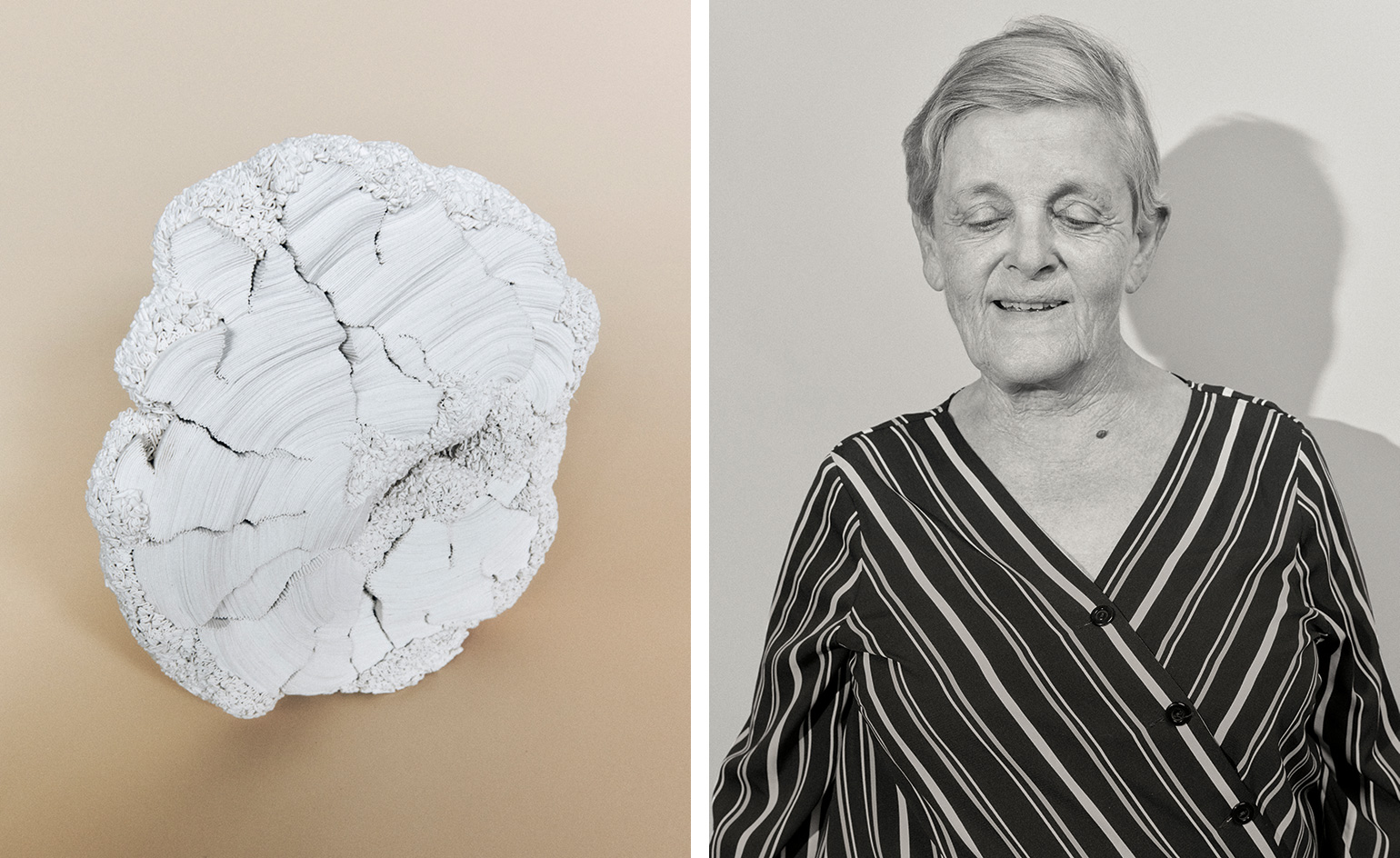
A large sculpture dominates the living room of Simone Pheulpin’s modest apartment west of Paris. It is laid out on a table, its surface a riot of shapes and textures. It boggles the mind that the entire thing – part of a pair commissioned by clients for their new home in the Hamptons – is made of cotton and pins. Pheulpin put over four months of patient handiwork into sculpting them, a real challenge despite 40 years of experience in her craft. ‘Now I see I was capable of doing it,’ she says, ‘and I can’t believe it.’
At age 77, Pheulpin is finally having her moment. This year she is exhibiting in both France and the UK, has won the Grand Prix de la Création de la Ville de Paris and received a special mention at the Loewe Craft Prize. As Loewe’s creative director Jonathan Anderson says, ‘Simone transforms humble materials into incredible sculptures. Her work is not something you come across every day, it is a true source of inspiration.’ Major museums are also taking note: both the Art Institute of Chicago and London’s V&A Museum have bought some of her works for their permanent holdings.
Antonia Boström, the V&A’s director of collections, became aware of Pheulpin’s sculptures about a year ago. ‘When you first see the work, you think it’s ceramic or clay that’s been cut,’ she says. ‘Then, when you understand what it’s really made of, it’s amazing. It adds to the extraordinary wonder of the object.’
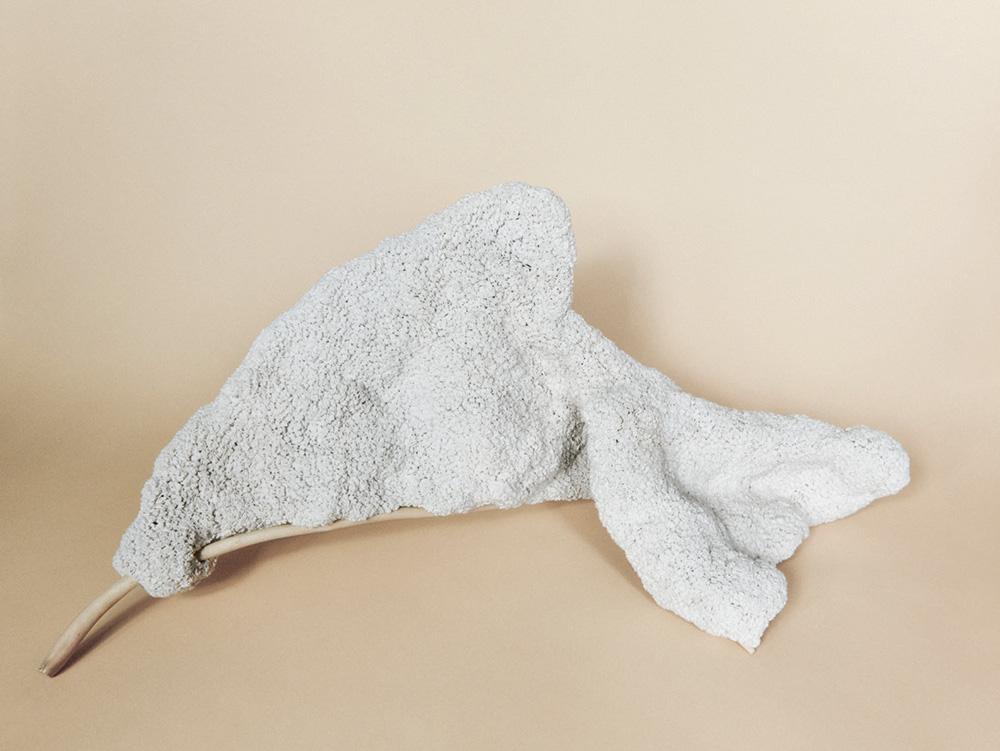
Entitled Epiphyte (from the botanical term for a plant that grows on another plant), this artwork mixes wood and cotton from Pheulpin’s native Vosges region
Pheulpin’s character is equally surprising – a petite grandmother of five with a pleasant, matter-of-fact demeanour and sly flashes of humour. Born in 1941, she grew up in the Vosges region. Her home town produced cotton for automobile tyres; as a child she played in the mills among the fabric. At 17, she was turned down to study at Nancy’s École des Beaux-Arts, so she took evening classes, married, had children, worked as a medical secretary and taught tennis. In her leisure time she sewed colourful fabric panels for her children’s rooms. One day she put the colourful fabric aside and picked up the raw cotton lining that gave it structure.
‘I remember the first piece I did. I put little circles in a box. But why I did that I don’t know,’ she says. She was 35 years old. In the years since, she has perfected her technique, always using raw cotton in the same off-white shade. There are no preparatory sketches: once her hands get started, it’s the material that guides her. Repeating the same folding and pinning gestures, she produces a startling variety of shapes from the natural world: swirls like sheep wool, concentric circles like cross sections of trees, fault lines. It took her ten years to figure out how to craft a hole; these days her goal is to recreate the cracked earth of the desert.
RELATED STORY
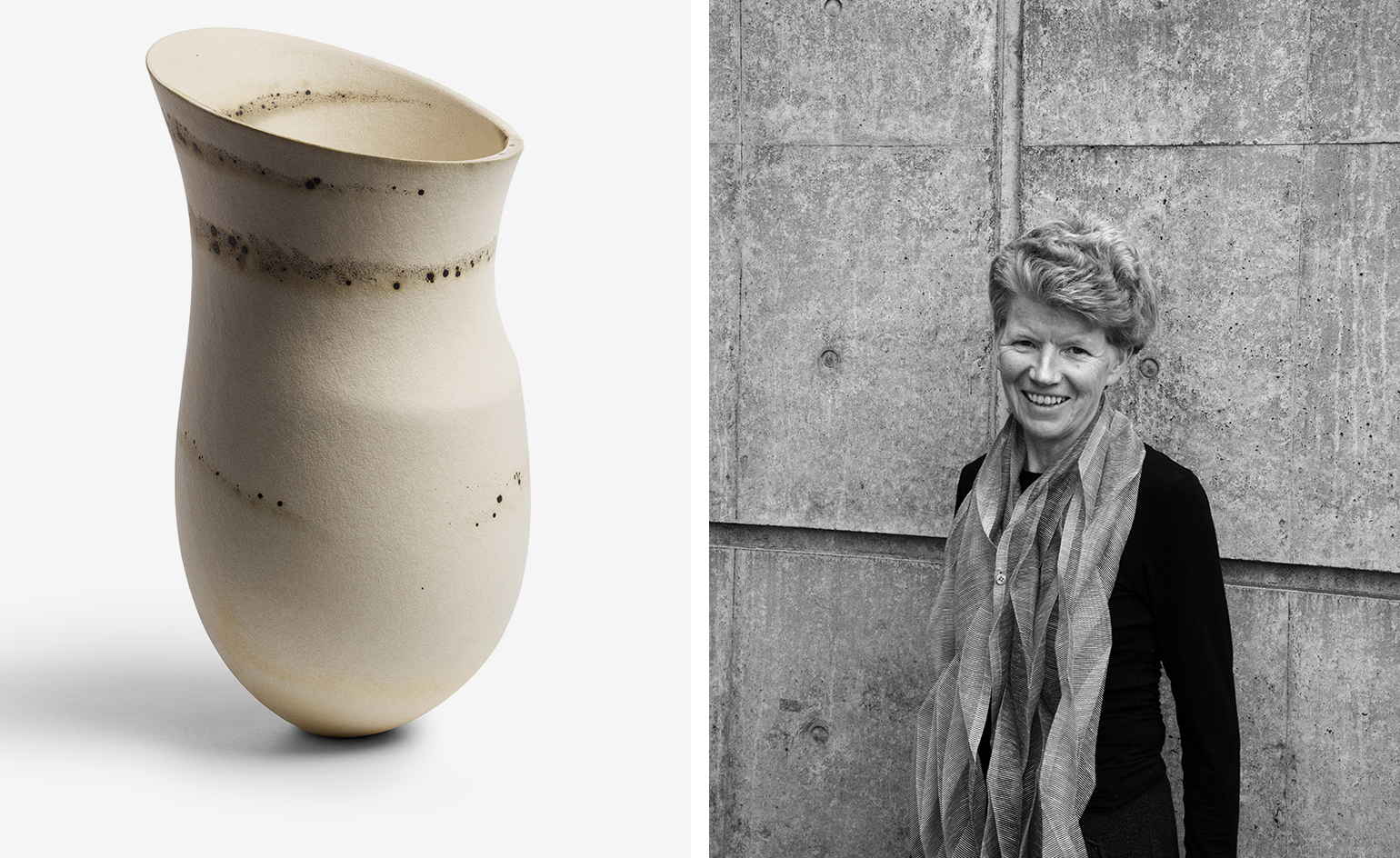
Pheulpin works at a small table in her flat or her family home in the Vosges. She is on her third thimble, having pierced two by pushing on millions of pins. She once asked a pin manufacturer for sponsorship, but it declined, saying that the pins were not visible in her work. Shortly afterwards, she was having her ankle X-rayed and thought of doing the same to a sculpture. The result was stunning, its exposed skeleton a prickly, swirling ballet. Now she regularly gets smaller works scanned, and the pin maker has become a sponsor.
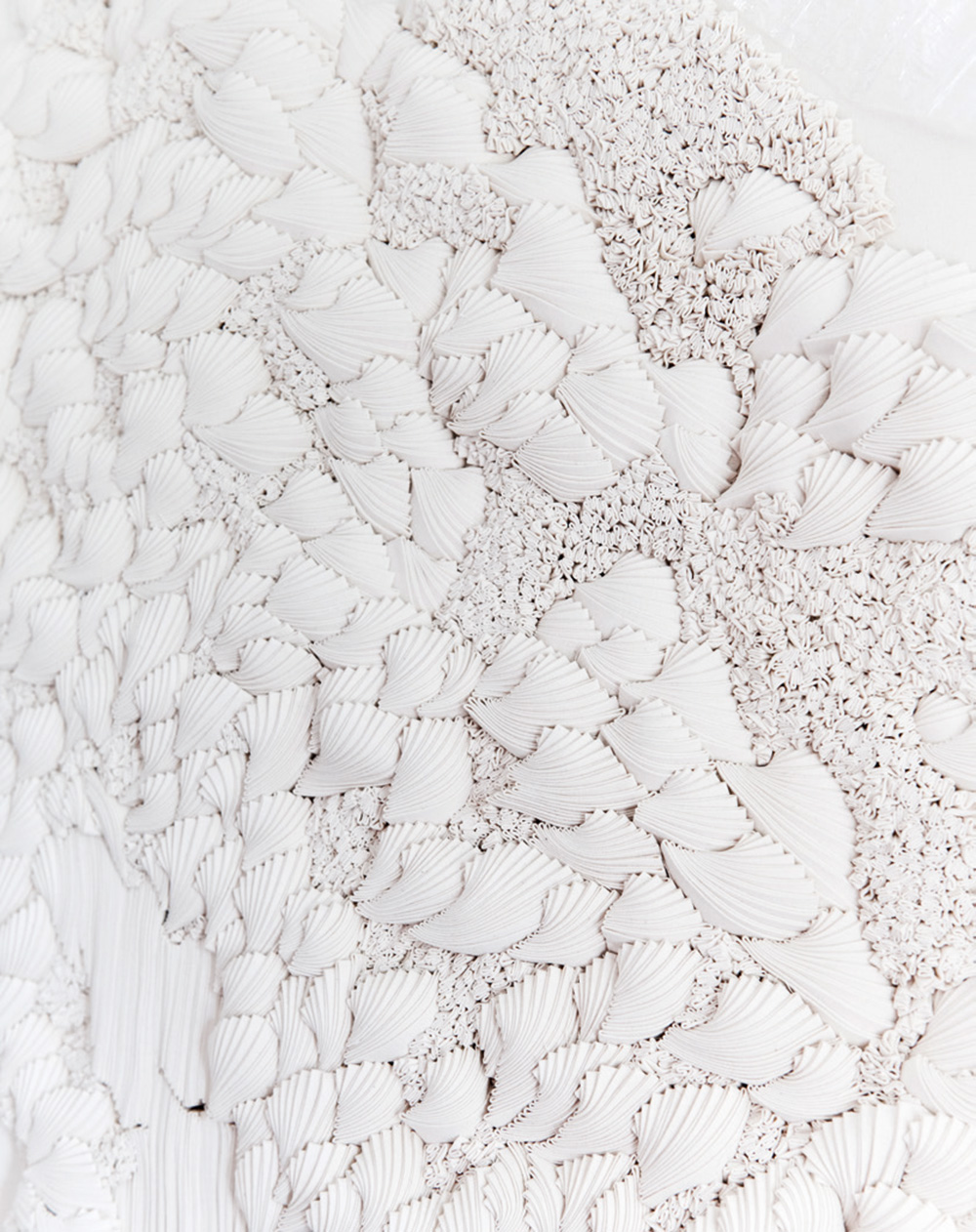
Detail of Pheulpin’s Bouillonement, a wall panel inspired by ocean foam, seashells and coral
One of Pheulpin’s biggest pieces required 5kg of pins, 3kg of fabric and nine months of effort. It belongs to Galila Barzilaï-Hollander, who owns four of Pheulpin’s sculptures. ‘She reflects herself in her work,’ the art collector says. ‘It’s very Zen, quiet, meditative, humble.’
For a long time, Pheulpin’s career was also quiet, notably in France, where textiles have only recently been considered a ‘noble’ art form. Pheulpin says, ‘People would see my work and say: “It’s beautiful. Oh… it’s fabric?” And suddenly it wasn’t so beautiful anymore.’ Things changed after she met Florence Guillier Bernard of itinerant gallery Maison Parisienne, who has represented her since 2008. Now, Pheulpin’s problem is that she works nearly every day, and still struggles to keep up with demand. When other artists ask where she stores her unsold works, ‘I don’t dare tell them I don’t have any’, she says with a sheepish laugh.
As originally featured in the September 2018 issue of Wallpaper* (W*234)
INFORMATION
For more information, visit Simone Pheulpin’s website
Receive our daily digest of inspiration, escapism and design stories from around the world direct to your inbox.
Amy Serafin, Wallpaper’s Paris editor, has 20 years of experience as a journalist and editor in print, online, television, and radio. She is editor in chief of Impact Journalism Day, and Solutions & Co, and former editor in chief of Where Paris. She has covered culture and the arts for The New York Times and National Public Radio, business and technology for Fortune and SmartPlanet, art, architecture and design for Wallpaper*, food and fashion for the Associated Press, and has also written about humanitarian issues for international organisations.
-
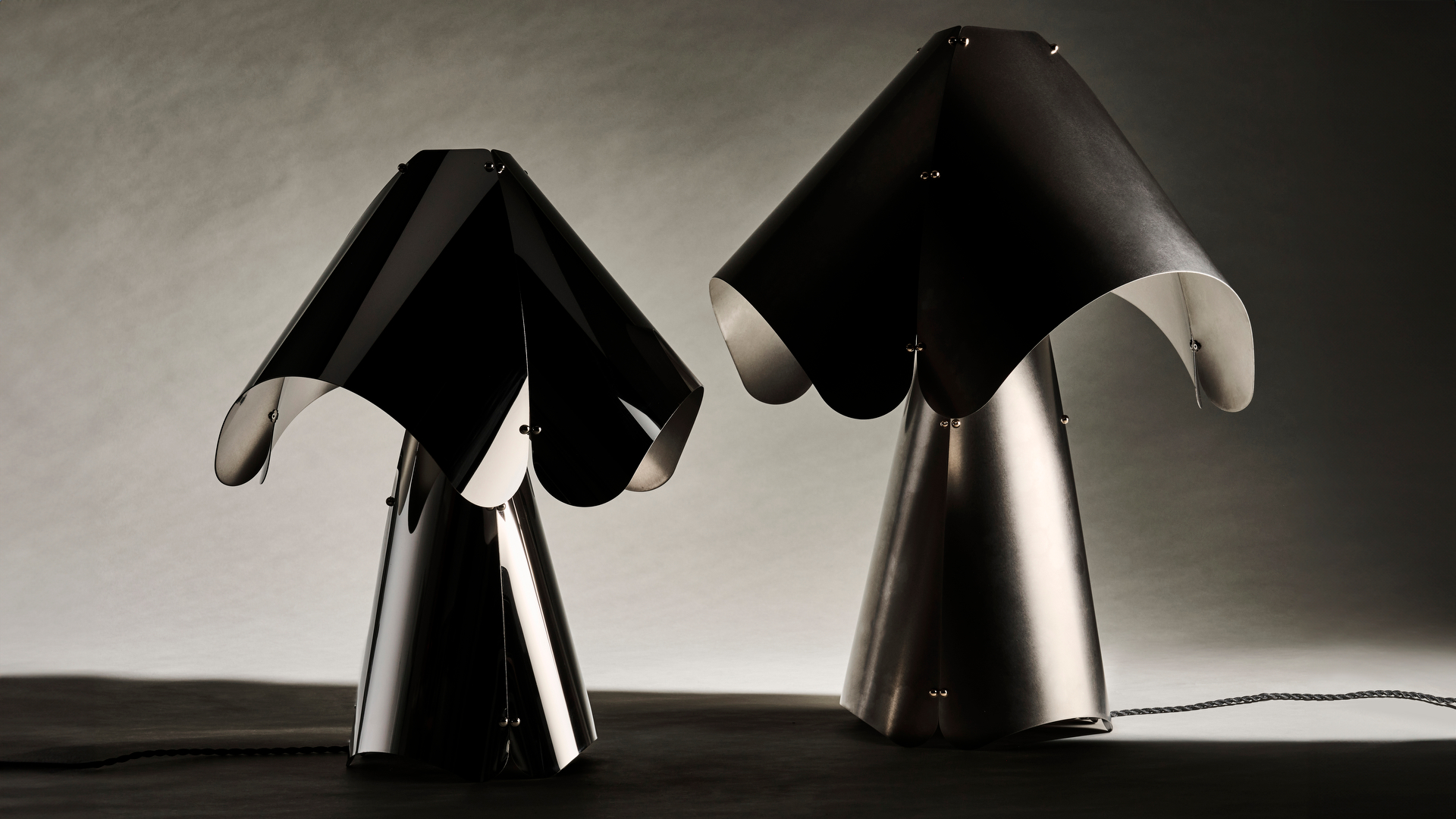 Australian studio Cordon Salon takes an anthropological approach to design
Australian studio Cordon Salon takes an anthropological approach to designWallpaper* Future Icons: hailing from Australia, Cordon Salon is a studio that doesn't fit in a tight definition, working across genres, techniques and materials while exploring the possible futures of craft
-
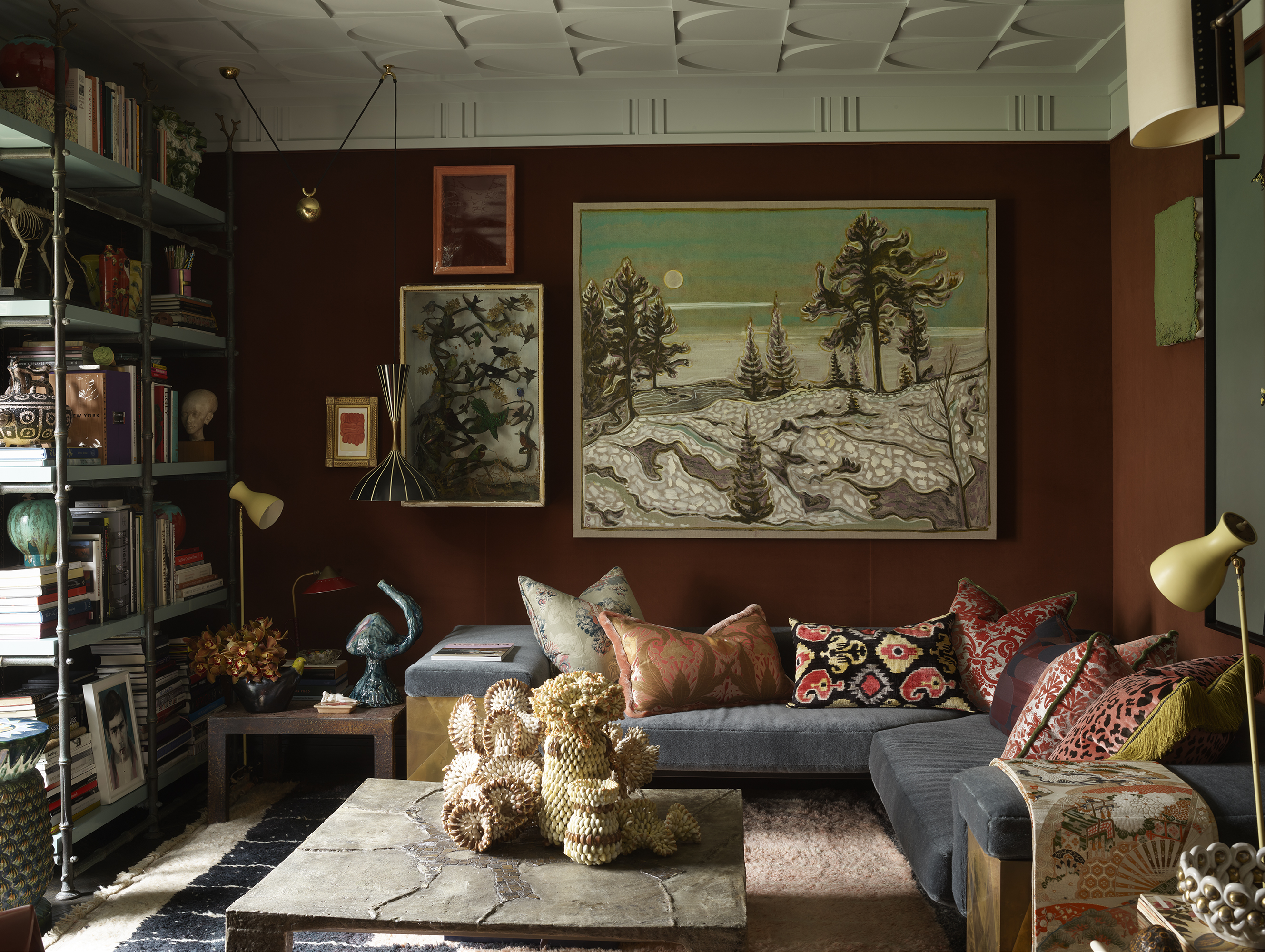 This designer’s Shoreditch apartment is ‘part grotto, part cabinet of curiosities’
This designer’s Shoreditch apartment is ‘part grotto, part cabinet of curiosities’The apartment serves as Hubert Zandberg’s ‘home away from home’, as well as a creative laboratory for his design practice. The result is a layered, eclectic interior infused with his personality
-
 Curvilinear futurism meets subtropical beaches at Not A Hotel’s ZHA-designed Okinawa retreat
Curvilinear futurism meets subtropical beaches at Not A Hotel’s ZHA-designed Okinawa retreatZaha Hadid Architects has revealed the design for the first property in Not A Hotel’s futuristic new Vertex collection, coming soon to southern Japan
-
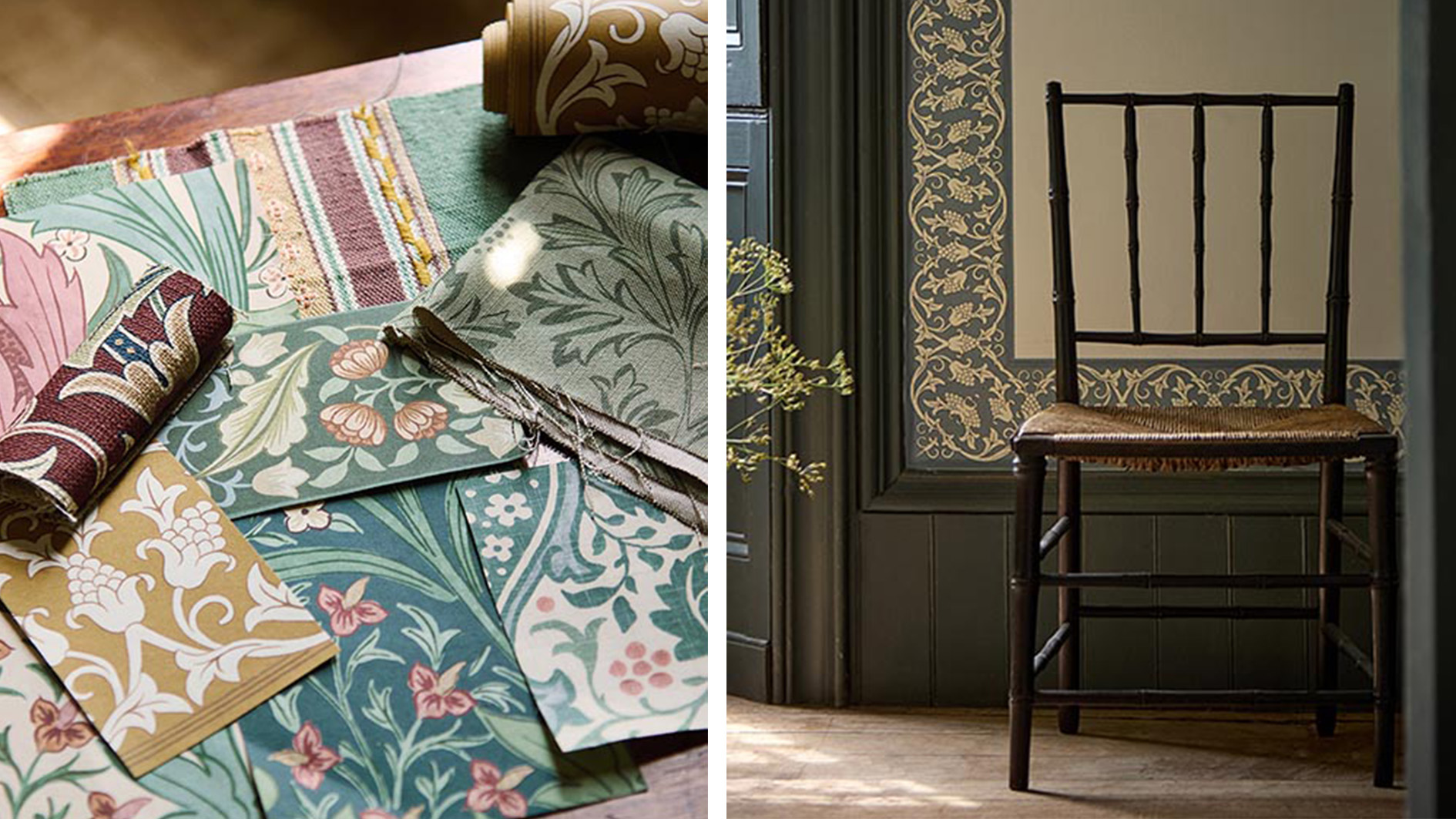 Lost William Morris designs are being revived and completed for a new collection
Lost William Morris designs are being revived and completed for a new collectionWhen The Huntington in California discovered incomplete William Morris designs in its archive, the museum partnered with Morris & Co. to bring the them to life in 'The Unfinished Works'
-
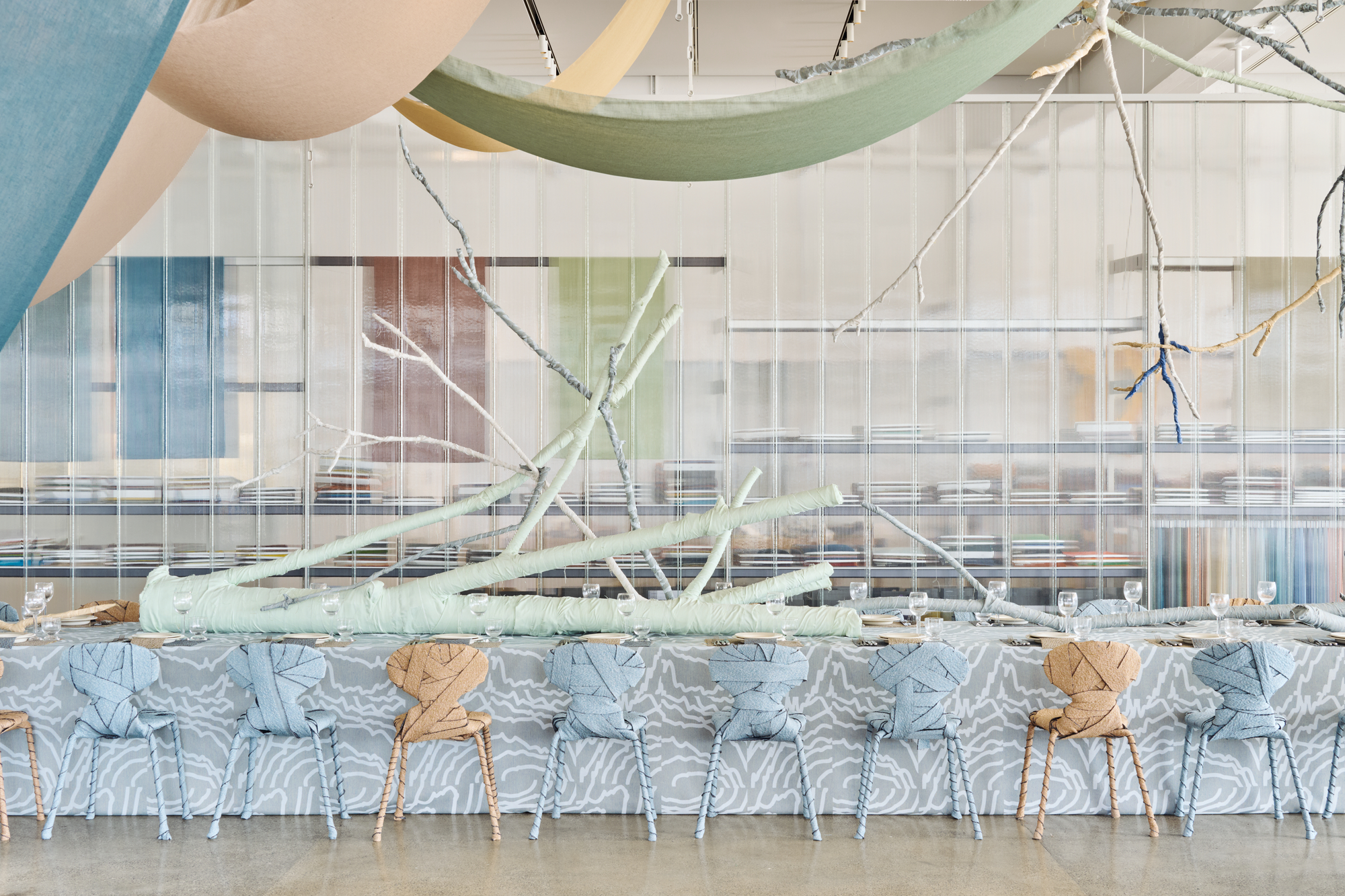 Patricia Urquiola’s immersive Kvadrat textile forest is inspired by the Nordic landscape
Patricia Urquiola’s immersive Kvadrat textile forest is inspired by the Nordic landscapeDuring Chart 2025, Patricia Urquiola and Danish designers Tableau team up to present a textile installation showcasing Kvadrat’s nature-inspired new collection
-
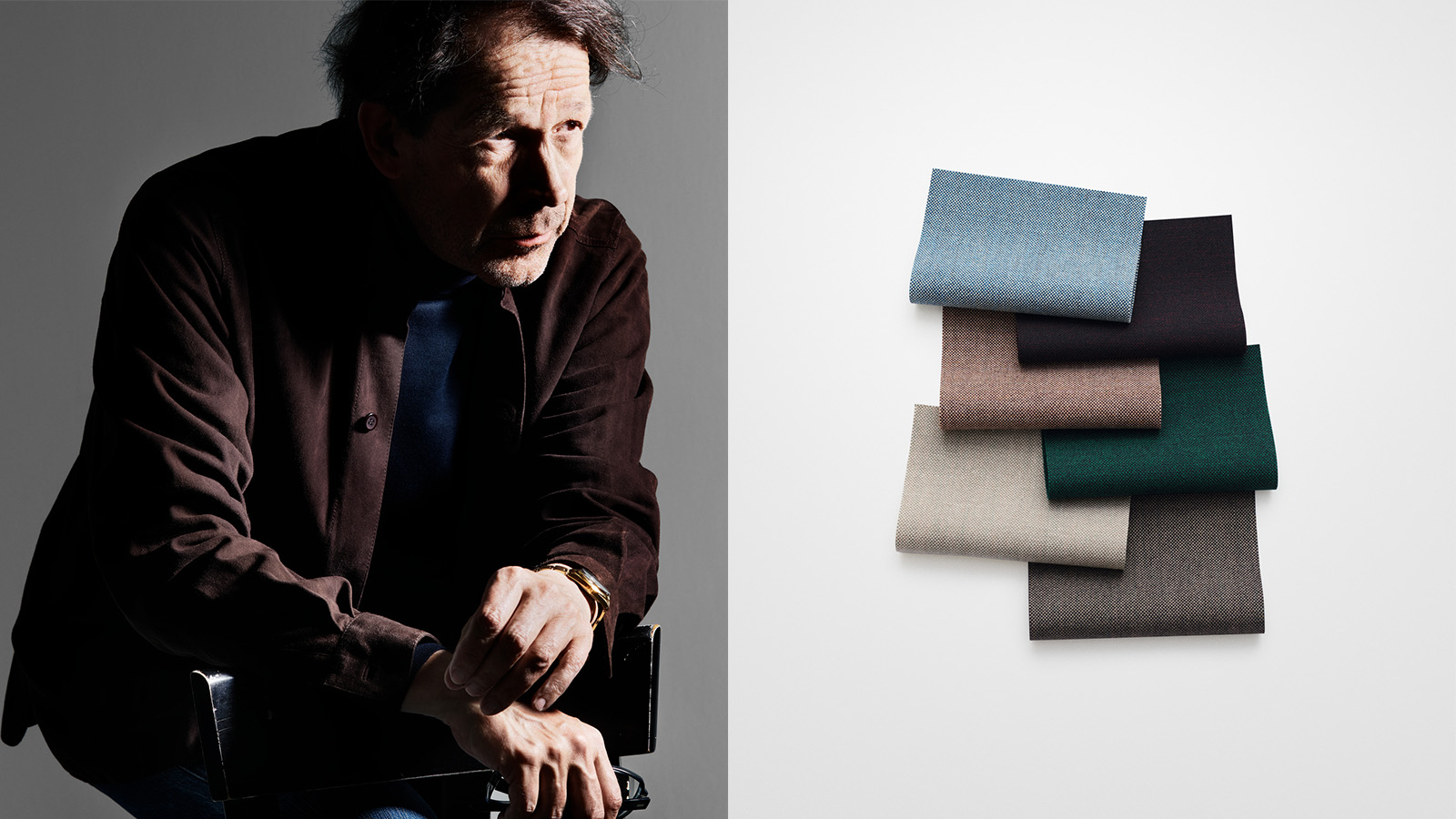 Kvadrat’s new ‘holy grail’ product by Peter Saville is inspired by spray-painted sheep
Kvadrat’s new ‘holy grail’ product by Peter Saville is inspired by spray-painted sheepThe new ‘Technicolour’ textile range celebrates Britain's craftsmanship, colourful sheep, and drizzly weather – and its designer would love it on a sofa
-
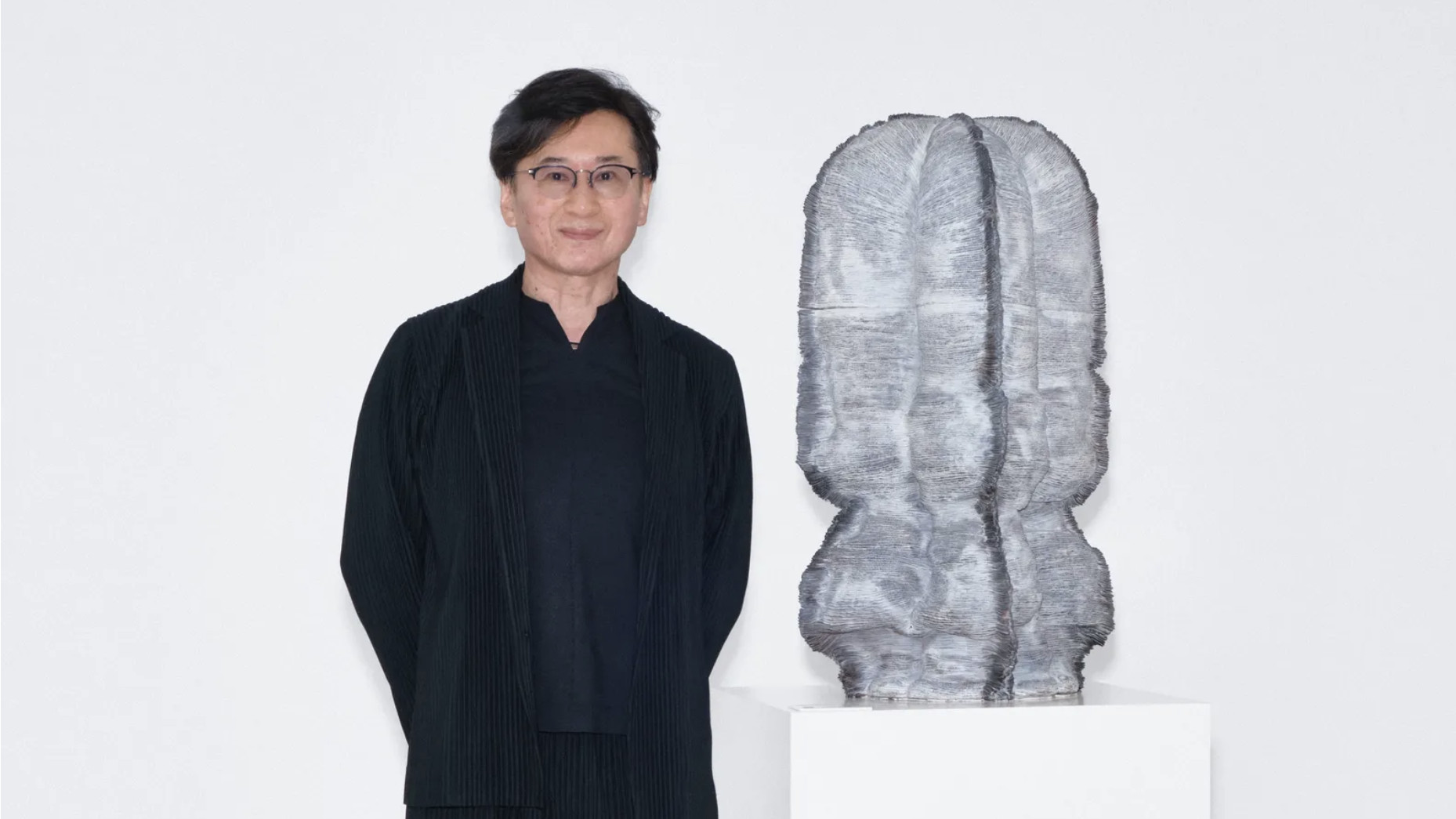 2025 Loewe Foundation Craft Prize winner announced as Kunimasa Aoki
2025 Loewe Foundation Craft Prize winner announced as Kunimasa AokiThe Japanese sculptor describes his work as ‘50 per cent tradition and 50 per cent innovation’
-
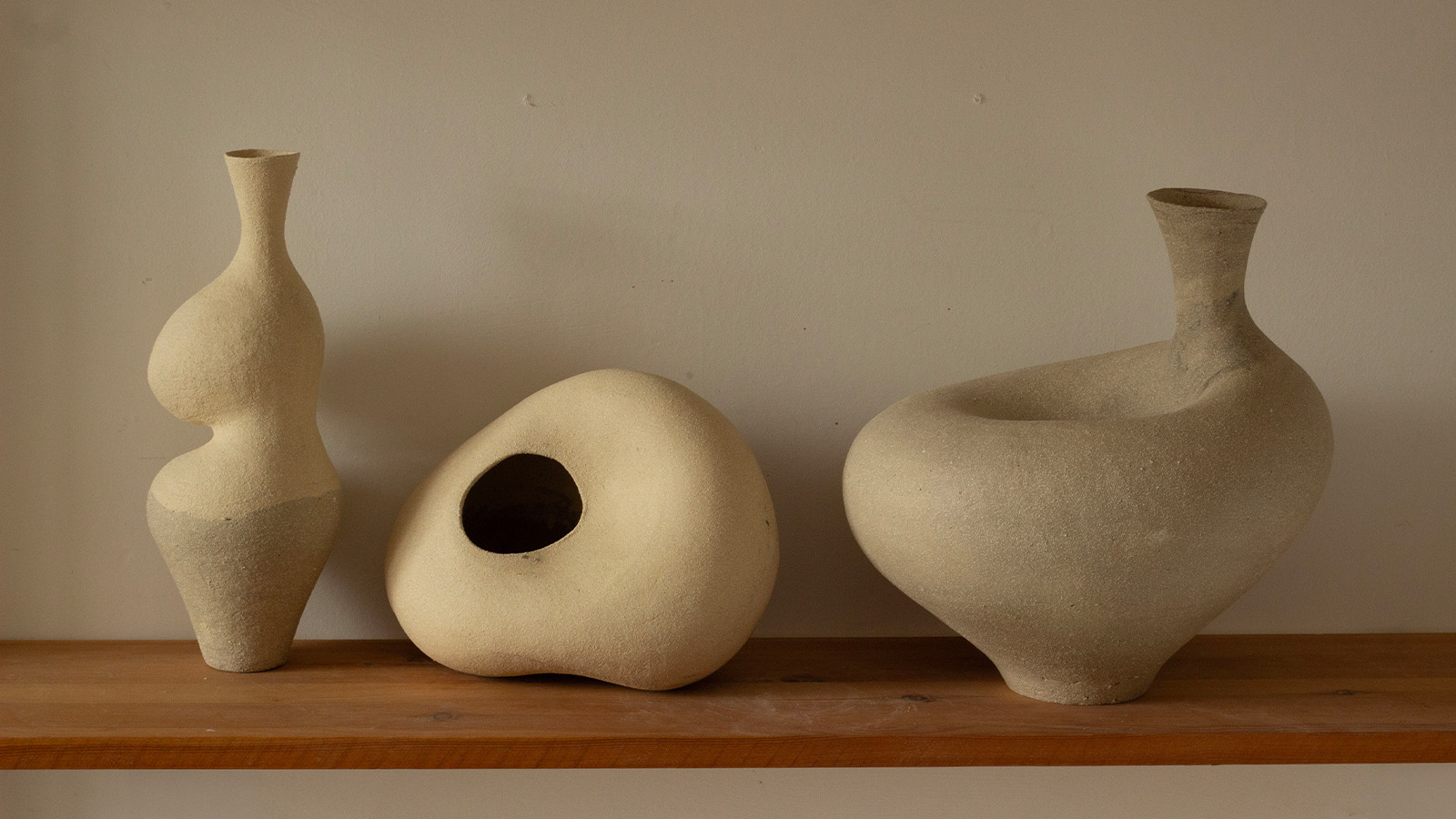 London Craft Week 2025 highlights – what to see this weekend
London Craft Week 2025 highlights – what to see this weekendLondon Craft Week 2025 (until 18 May) brings together some 1,000 established and emerging makers. Here is everything we saw and loved so you don't miss a thing
-
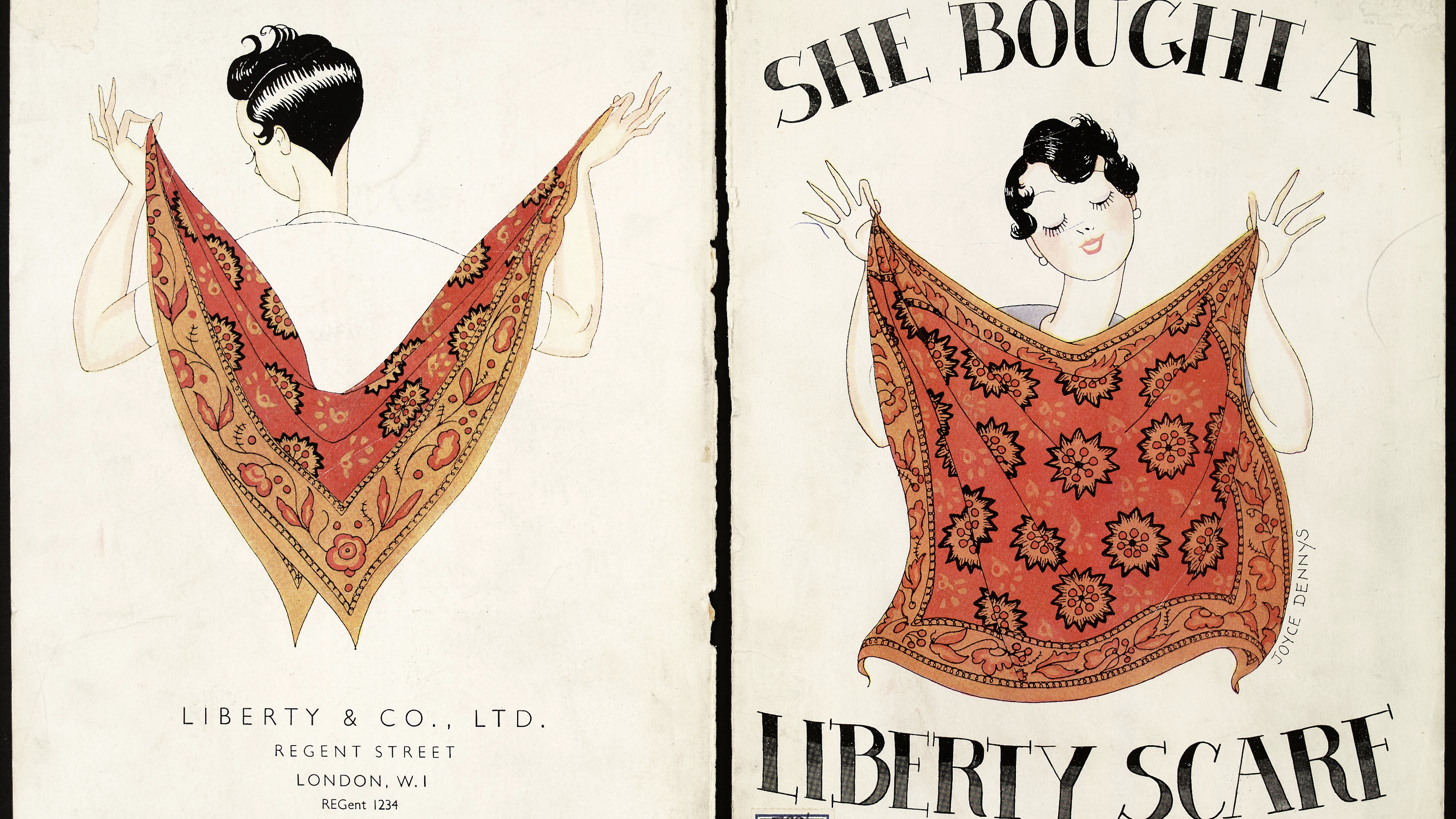 Liberty at 150: a history of the brand in 10 objects
Liberty at 150: a history of the brand in 10 objectsLiberty is marking its 150th anniversary; to celebrate, we remember products and prints that helped make the department store the cultural touchpoint it is today
-
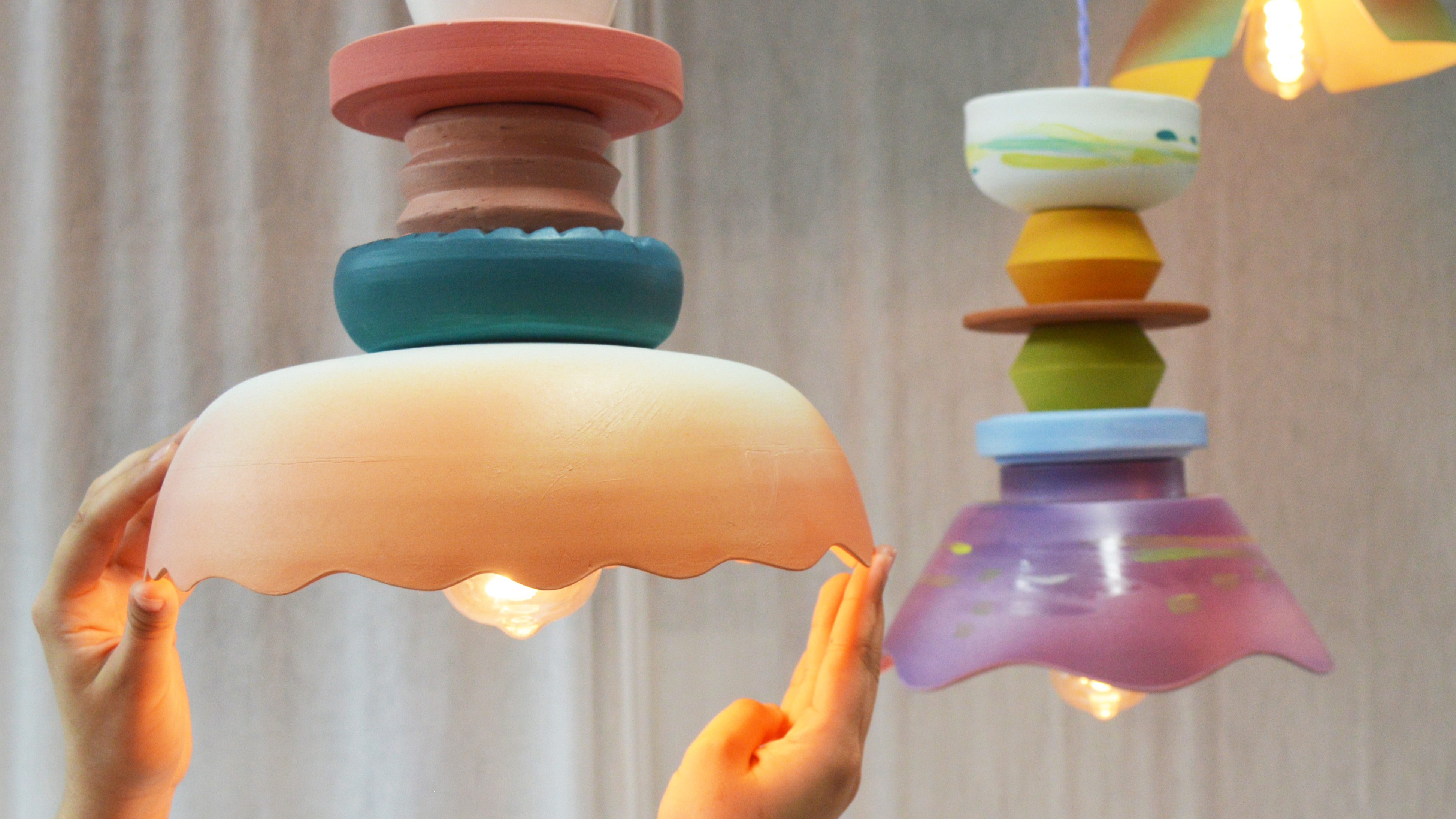 What to see at London Craft Week 2025
What to see at London Craft Week 2025With London Craft Week just around the corner, Wallpaper* rounds up the must-see moments from this year’s programme
-
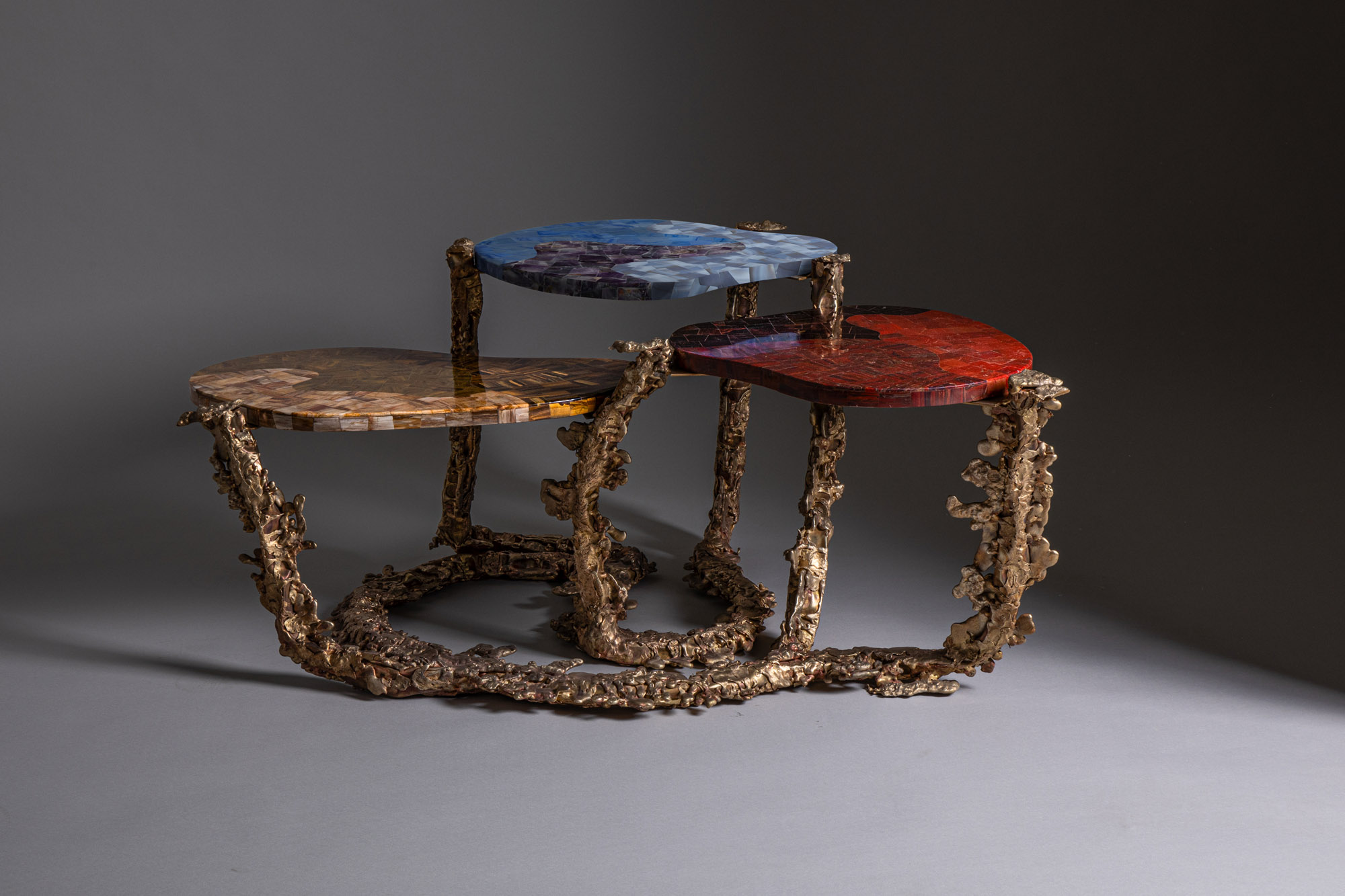 Inside the Shakti Design Residency, taking Indian craftsmanship to Alcova 2025
Inside the Shakti Design Residency, taking Indian craftsmanship to Alcova 2025The new initiative pairs emerging talents with some of India’s most prestigious ateliers, resulting in intricately crafted designs, as seen at Alcova 2025 in Milan